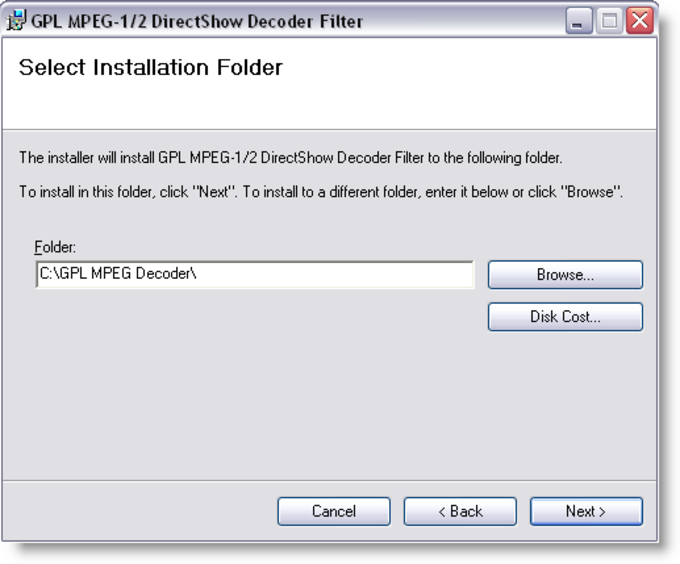

- #Dolby ac3 codec windows 7 drivers#
- #Dolby ac3 codec windows 7 software#
- #Dolby ac3 codec windows 7 windows 7#
- #Dolby ac3 codec windows 7 zip#
#Dolby ac3 codec windows 7 drivers#
After installing all the drivers from the Gigabyte CD (+ updates received via the internet), the system booted and the Intel TV Wizard allowed me to calibrate the screen on my Sony LCD TV.
#Dolby ac3 codec windows 7 windows 7#
I installed Windows 7 on it (I’ll write up my experiences with Linux in a future story). Intel stock cooler2500rpm (audible – noisy) Intel stock cooler1200rpm (audible – but very quiet) The core components of the build are the GigaByte H55N-USB3 motherboard, and the Intel Core i3 530 CPU.Įverything was assembled in my Lian Li PC-Q07 mini-ITX case.įirst some general figures on the Core i3 system: Today I got my gigabyte motherboard replacement (the mini-ITX version I had originally ordered), so I could finally start building my first Core i3 based HTCP. The receiver just gets the multi channel linear PCM and outputs that. Here, your receiver is unaware that it’s receiving either Dolby True HD or DTS HD, so there will be no indicators on the receiver telling you that it is actually playing Dolby True HD / DTS HD. It then goes on to send multi channel linear PCM to the receiver (MCH PMC).
#Dolby ac3 codec windows 7 software#
Here, a piece is software (ex: ffdshow) is responsible for decoding the True HD / DTS HD bitstream.

The amplifier with True HD and DTS HD decoding capabilities can then decode that stream, rather than the software on the HTPC.Īn alternative to bitstreaming is software decoding. So bitstreaming means sending undecoded True HD or DTS HD Bitstream over a digital link (minimum HDMI 1.3) to an external device (receiver / amplifier). Because the receiver is receiving the encoded / compressed audio from the player (your HTCP), it notices this and turns on the DTS or Dolby symbol on your receiver display. That encoded / compressed audio is sent to the receiver, and it’s the receivers responsibility to decode the audio stream. The audio is encoded or compressed (to consume less space on a Blu-ray disc).
#Dolby ac3 codec windows 7 zip#
If you’re not all that familiar with audio formats, try to think of DTS or Dolby as a compressed format (much like a ZIP file). With DTS HD Master Audio, or Dolby True HD, it’s a different story. Most Atom/Ion combos for example, when hooked up to a receiver through HDMI, will have no problem sending the DTS / Dolby stream to the receiver. Most HTPC boxes support DTS 5.1 and Dolby Digitial 5.1 without much effort. Most Blu-ray discs contain either a DTS HD Master Audio, or a Dolby True HD soundtrack They’re basically the successors of the DTS 5.1 and Dolby Digital 5.1 coded. The receiver has support for HD audio formats such as Dolby TrueHD and DTS-HD Master Audio making it an ideal combo for a high definition audio experience. I hooked up the Corei3 build to my Onkyo TX SR-507 receiver via HDMI

The primary goal off this writing was to get the Dolby TrueHD & DTS-HD Master Audio up & running. One of the biggest strengths of the Core i3, and the H55 chipset is that it also supports HDMI Audio Pass Through for Native Dolby TrueHD & DTS-HD Master Audiostreaming. However, combine the Atom with an Ion chipset and a blu-ray player, and the difference becomes a lot smaller. Obviously, it cannot compete with the power consumption of the Atom. Not only is the Core i3 platform a lot more powerful compared to the Intel Atom platform, is also maintains a fairly low power consumption. The reason being that the Core i3 chip (that combines both CPU and GPU onto one physical chip) offers more then the current Atom based platforms have to offer. “When the Intel Core i3 platform was announced, it was hailed as being the holy grail for HTCP enthusiasts. The following post is reproduced from Bitstreaming Dolby TrueHD and DTS-HD with the Intel Core i3, Published on Do it Yourself HTPC Blog, written by ddewaele, to whom I would like to say THANK YOU.


 0 kommentar(er)
0 kommentar(er)
